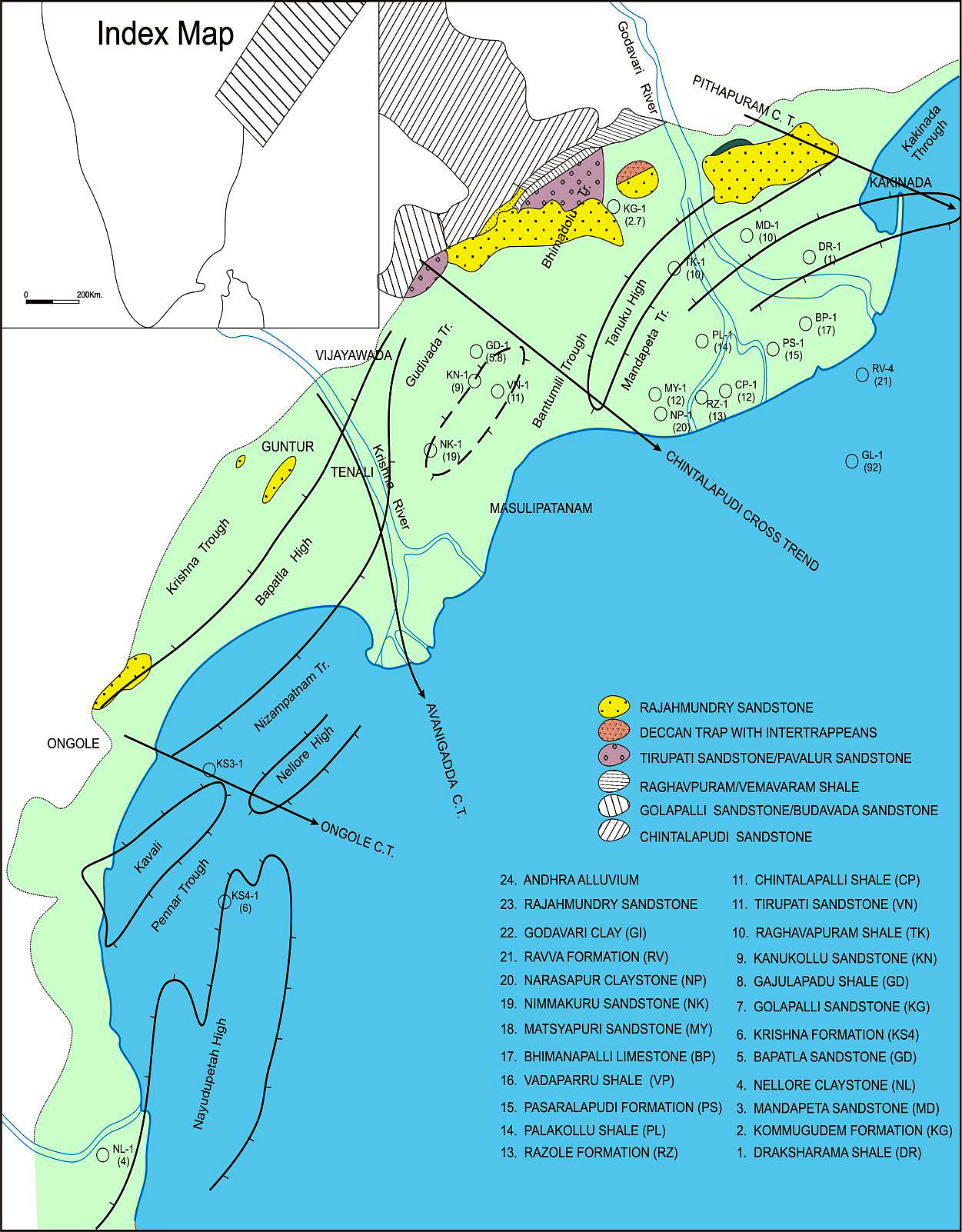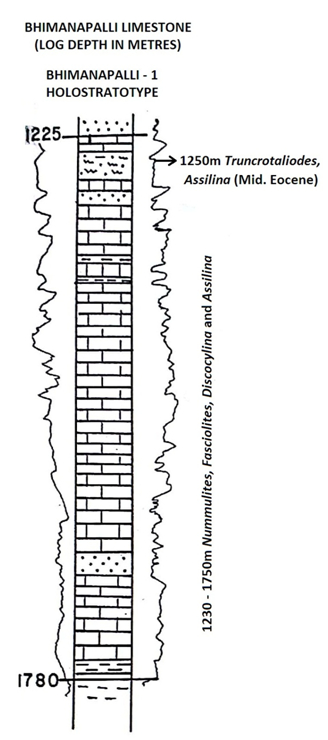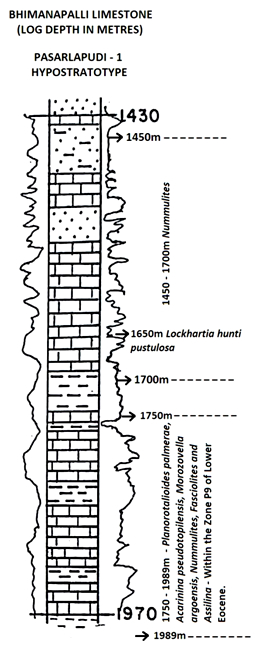Bhimanapalli Fm
Type Locality and Naming
LANDWARD: The type section is in the Well Bhimanapalli-A (depth interval: 1225-1780 m). The hypostratotype is in the Well Pasarlapudi-A (depth interval:1430-1970 m). It was named after the village Bhimanapalli by ONGC team steered by Venkatarengan et al. (1993) adopted and issued as Document-VII by KDMIPE, ONGC, Dehradun (1993). [Original Publication: Rao, G.N. (1990) Subsurface stratigraphic nomenclature of Krishna-Godavari Basin, ONGC, unpublished report.]. Reference well: Well Pasarlapudi-A, Interval 1430-1970 m and thickness is 540 m.
Synonyms: Bhimanapalli Limestone
[Figure: Generalized Late Cretaceous-Cenozoic lithostratigraphy transect, Krishna-Godavari Basin. From Keller et al., 2011, Jour. Geol. Soc. India, 78:399-428, their Fig. 2]
[Figure: Map showing the locations of designated holostratotype section for the formation in the KG Basin (After ONGC, Pandey and Dave, 1998) in Raju et al., 2021, ONGC Bulletin, Special Issue, Vol. 56, No. 2]
Lithology and Thickness
Dolomitic limestone. This formation consists mainly of highly fossiliferous limestone with thin sand-shale alternations in some areas. The limestones are dominantly algal dolostone with subhedral and anhedral dolomite crystals, abundant red algal grains, anhedral calcite and crystalline foraminiferal tests, vuggy at places. The sandstone is well sorted with angular to subangular quartz grains, minor feldspars and at places glauconite. It has a thickness varying from 540-555m.
[Figure 1: Well log of Vadaparru-1 Hypostratotype (modified after Venkatarengan et al., 1993)]
[Figure 2: Well log of Bhimanapalli-1 Hypostratotype (modified after Venkatarengan et al., 1993)]
Relationships and Distribution
Lower contact
Unconformable with the Pasarlapudi Fm / Vadaparru Fm.
Upper contact
Conformable with the Matsyapuri Fm.
Regional extent
It is extensively developed in parts of Krishna-Godavari Basin.
GeoJSON
Fossils
Planorotalites palmerae, Acarinina pseudotopilensis, Morozovella aragonensis, Fasciolites, Assilina. Nummulites, Lockhartia hunti pustulosa, and Discocyclina
Age
Depositional setting
Inner-Middle neritic.
Additional Information



